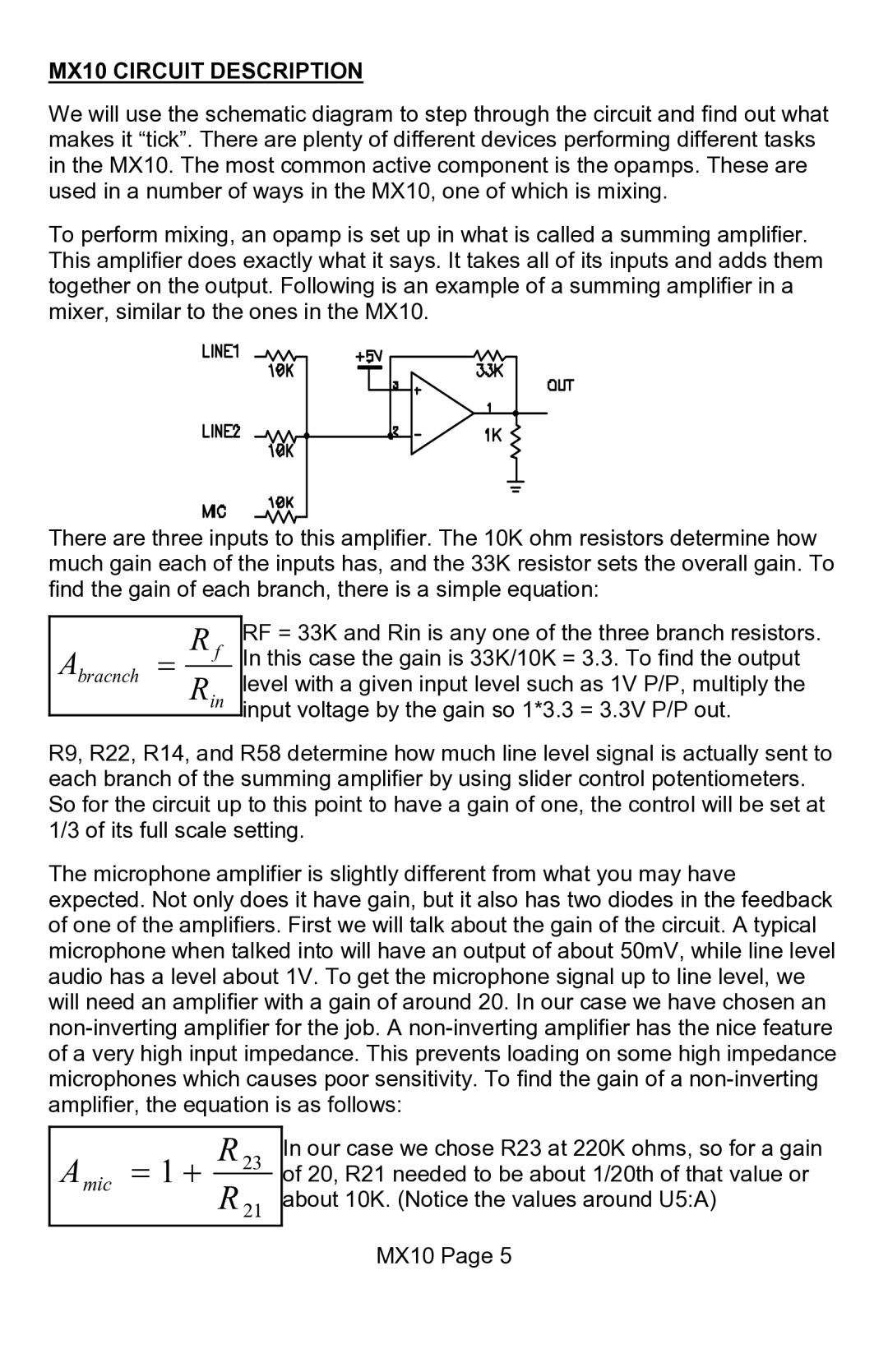
MX10 CIRCUIT DESCRIPTION
We will use the schematic diagram to step through the circuit and find out what makes it “tick”. There are plenty of different devices performing different tasks in the MX10. The most common active component is the opamps. These are used in a number of ways in the MX10, one of which is mixing.
To perform mixing, an opamp is set up in what is called a summing amplifier. This amplifier does exactly what it says. It takes all of its inputs and adds them together on the output. Following is an example of a summing amplifier in a mixer, similar to the ones in the MX10.
There are three inputs to this amplifier. The 10K ohm resistors determine how much gain each of the inputs has, and the 33K resistor sets the overall gain. To find the gain of each branch, there is a simple equation:
Abracnch = R f Rin
RF = 33K and Rin is any one of the three branch resistors. In this case the gain is 33K/10K = 3.3. To find the output level with a given input level such as 1V P/P, multiply the input voltage by the gain so 1*3.3 = 3.3V P/P out.
R9, R22, R14, and R58 determine how much line level signal is actually sent to each branch of the summing amplifier by using slider control potentiometers. So for the circuit up to this point to have a gain of one, the control will be set at 1/3 of its full scale setting.
The microphone amplifier is slightly different from what you may have expected. Not only does it have gain, but it also has two diodes in the feedback of one of the amplifiers. First we will talk about the gain of the circuit. A typical microphone when talked into will have an output of about 50mV, while line level audio has a level about 1V. To get the microphone signal up to line level, we will need an amplifier with a gain of around 20. In our case we have chosen an
Amic = 1 + R 23
R 21
In our case we chose R23 at 220K ohms, so for a gain of 20, R21 needed to be about 1/20th of that value or about 10K. (Notice the values around U5:A)
